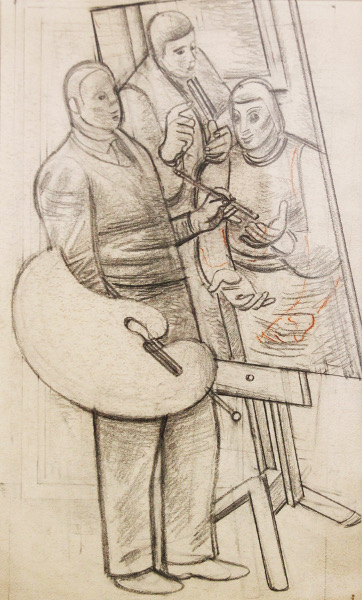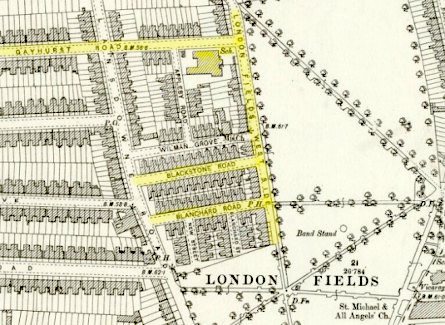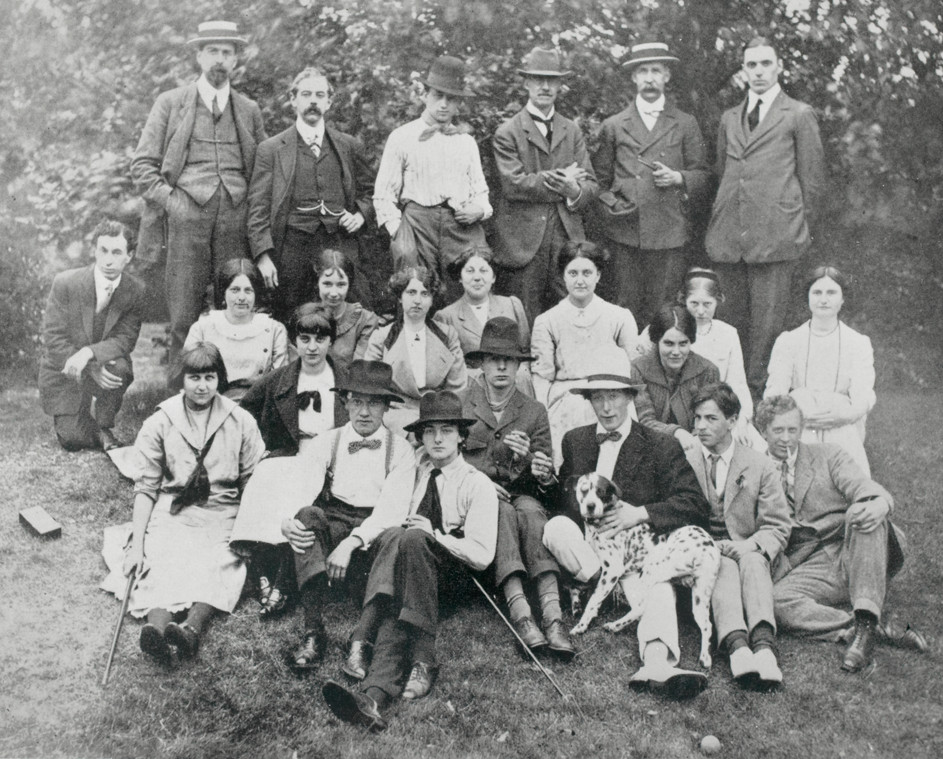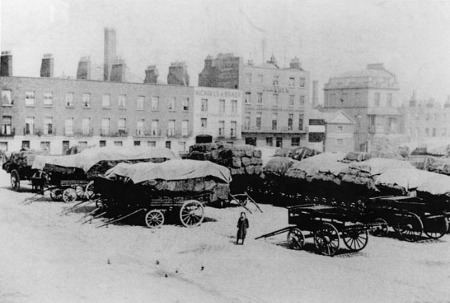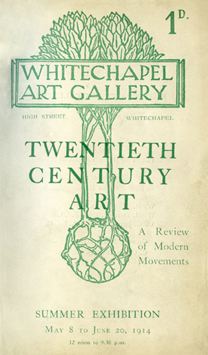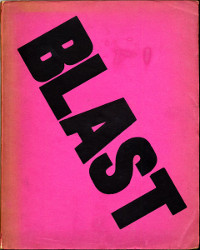|
| 4 August 1914: Britain declares war on Germany during the start of the First World War. Roberts, then living in Chalcot Crescent, NW1, continues working as an artist.
|
| Autumn: Is among the young painters and sculptors accommodated by the hunger-marcher Stewart Gray in the house Gray rents at 8 Ormonde Terrace, by Primrose Hill and Regent's Park, NW8. In his Let There Be Sculpture (1940), Jacob Epstein describes how 'there was a life class at which I sometimes drew, and sometimes the artists, among others Roberts and Bomberg, a mysterious Indian artist, and some models, would have parties' there (ch. 11).
|
|
| Is elected to the London Group. He exhibits with them in 1915, in the 1920s, and occasionally in the 1930s and '40s.
|
1915
| Sarah Kramer, staying with David Bomberg and his wife to visit her brother Jacob in London during the school holidays, meets WR
with a group of Slade students in an ABC tea shop in Tottenham Court Road, W1.
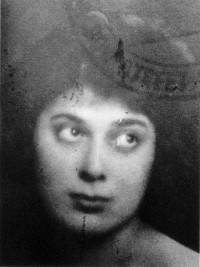
Sarah Kramer in 1915
|
|
| March: WR shows three works in the London Group exhibition at the Goupil Gallery, Regent Street, W1.
|
|
| 23 April: WR's cubist drawing of St George and the Dragon appears in the London Evening News.
|
|
| June–July: Shows six works in the Vorticist exhibition at the Doré Gallery, New Bond Street, W1.
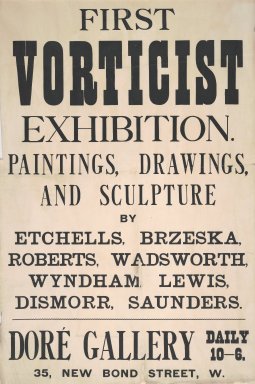
Poster for the First Vorticist Exhibition, Doré Gallery, London, June–July 1915
|
|
| July: Contributes two illustrations to Blast no. 2: Combat and Drawing (Machine Gunners).
|
|
| Works for some weeks in a munitions factory in Tufnell Park, NW5.
|
|
| Late 1915 or early 1916: Fails to get accepted by the Artists Rifles.
|
1916
| 4 April: Enlists in the Royal Field Artillery (RFA) as a gunner (no. 123744), having failed
to join the Welch Regiment.
|
|
| April: At 4th Depot RFA, Woolwich, London; then transferred to cavalry barracks at Weedon, Northamptonshire. Maintains contact with Sarah Kramer by letters.
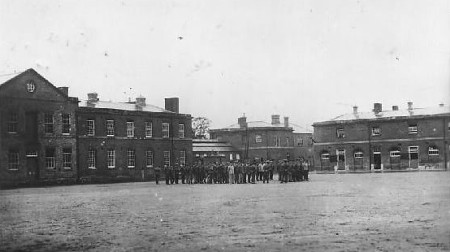
Weedon Barracks, Northamptonshire, c.1915
|
|
| August: Spends embarkation leave at the Hôtel de la Tour Eiffel, 1 Percy Street, W1; then reports to RFA Woolwich depot before in mid-August embarking for Le Havre.
|
|
| With his unit, joins the 51st Brigade, RFA; takes a course in signalling.
|
|
| Late August/early September: Joins the gun batteries of the 51st Brigade facing Vimy Ridge.
|
|
| Late 1916?: Becomes an officer's batman for a time, including a week at Paris-Plage
near Boulougne.
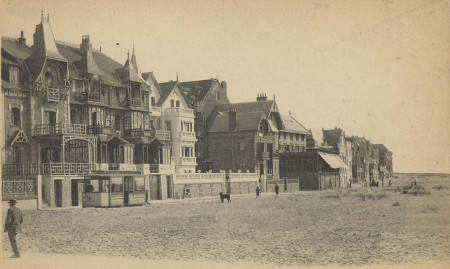
The seafront at Le Touquet-Paris-Plage c.1917–19
|
1917
| January–February: Four large 'abstract' works by Roberts that have been shipped to New York are exhibited at the Penguin Club's 'Exhibition of the Vorticists' there and are subsequently bought by the collector John Quinn. (Quinn died in 1924, and in 1927 his collection was sold; the whereabouts of these paintings by Roberts is now unknown.)
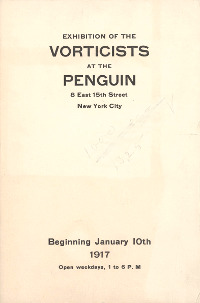
Catalogue of the Vorticist exhibition at the Penguin Club, January–February 1917
|
|
| Early spring: Moves with the 51st Brigade to Arras.
|
|
| Late autumn: Moves with the 51st Brigade to the Ypres sector, north of the Menin Ridge.
|
|
| Late 1917: Receives a letter from a friend, Captain Guy Baker, suggesting application
to Paul Konody, who is selecting artists to prepare war paintings for the Canadian
War Records Office.
|
1918
| January: Two weeks' home leave, at Hackney and the Hôtel de la Tour Eiffel; then back to France to rejoin the 51st Brigade near Heudicourt.
|
|
| Receives a letter dated 28 December 1917 from the Canadian War Records Office about
painting battle pictures for the Canadian War Memorials Fund.
|
|
| Early 1918: With the 51st Brigade on the Somme at Etinehem near Albert.
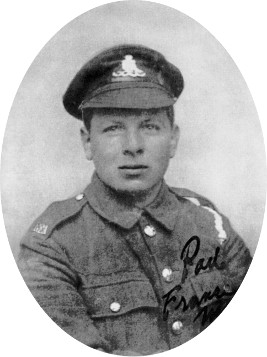
Roberts photographed at Etinehem, France, March 1918
|
|
| April: While retreating with the 51st Brigade to Messines in the Ypres sector, receives a summons to return to England as an official war artist for the Canadian War Records Office for a period of six months.
|
|
| 20 April: Arrives back in London, and is then joined by Sarah Kramer.
|
|
| May: Approached by the British Ministry of Information to paint a picture for the
proposed Great War Hall of Remembrance.
|
|
| Lives at 76 Grafton Street, W1, moving to 32 Percy Street, W1, in the summer.
|
|
| June: Takes a six-month lease on 10 Chelsea Manor Studios, in Flood Street, SW3, to work on The First German Gas Attack at Ypres for the Canadian War Records Office.
|
|
| Works on A Shell Dump, France for the Ministry of Information.
|
1919
| 3 January–1 March: The First German Gas Attack at Ypres hangs with other Canadian-commissioned war paintings at the Royal Academy.
|
|
| 6 June: Sarah Kramer gives birth to Roberts's son, John David Roberts, at 54 Leigham Court Road, Streatham, SW16 – a maternity hospital run by the Mission of Hope, an organisation 'carried on for the reception of expecting Mothers (single women) of otherwise good character, and of respectable antecedents'. It was 'careful to take in only birth mothers who came from "decent" backgrounds, and particularly from a Christian home', though Sarah was from a Jewish family.
|
|
| Prepares designs for Edith Sitwell's modernist anthology Wheels and a poster for Sacheverell Sitwell's 'French Art 1914–1919' exhibition.
|
|
| Autumn: Designs three panels for the Hôtel de la Tour Eiffel.
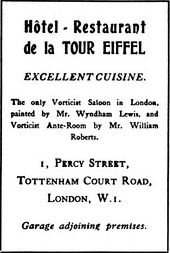
An advertisement for the Hôtel de la Tour Eiffel, mentioning Roberts's designs, in The Tyro, 1, 2 (1922)
|
|
| 13 November: Demobilised.
|
|
| Designs a cover for the December issue (no. 3) of the Coterie arts review.
|
|
| December: A Shell Dump, France is included at the centre of an exhibition of war paintings at the Royal Academy, till February 1920.
|
1920
| March–April: Takes part in the Group X exhibition at the Mansard Gallery, Heal's, W1.
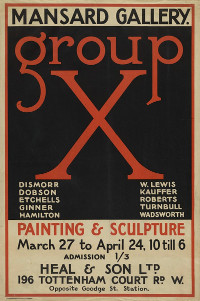
The poster (designed by E. McKnight Kauffer) for the Group X exhibition
|
|
| Moves to Albany Street, NW1.
|
1921
| Moves to Mornington Crescent, NW1.
|
|
| June–July: Shows four works on paper in an exhibition of 'Un Groupe de Peintres Modernes [Anglais]', organised by Robert Bevan and Charles Ginner, at Galerie Druet, Paris.
|
1921–2
| Prepares a design for the cover of the arts periodical Fanfare.
|
1922
| Moves to Edith Grove, SW10.
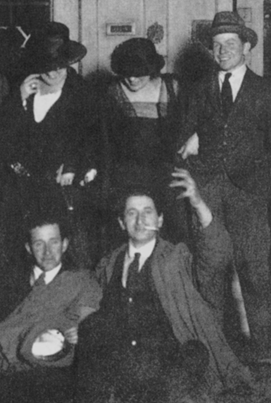
William Roberts (standing right) and Joseph Kramer (seated right) with others outside the Harlequin Tea Rooms, c.1922
|
|
| 28 June: Marries Sarah Kramer from 7 Springfield Mount, Leeds. They honeymoon in France.

Sarah Roberts in Paris, after her wedding in 1922
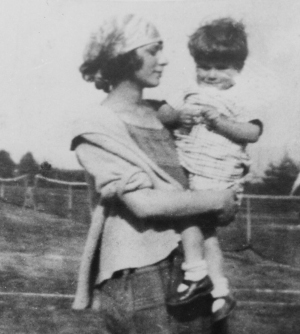
Sarah and John Roberts in 1922
|
|
| Is commissioned by T. E. Lawrence ('Lawrence of Arabia') to make portrait drawings for the de-luxe edition of his book Seven Pillars of Wisdom. Lawrence's own portrait is painted by WR in a room at 2 Coleherne Terrace, Earl's Court, SW10. This room, rented from the artist William McCance, is used by WR as a studio until ? late 1924. Lawrence later writes of Roberts, 'He makes help difficult sometimes, and yet I feel that I would like the oyster if I had any tool strong enough to pry it open' (to Eric Kennington, 26 June 1923).
|
1923
| Moves to 18 Fitzroy Street, W1.
|
| 1923/4
| Four-year-old John Roberts is dropped. He subsequently spends four years in hospital, eventually being operated on at the London Hospital by a surgeon named Milne, who receives a portrait of Sarah in payment.
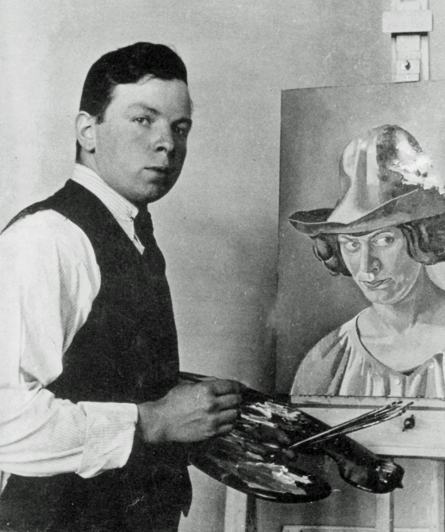
Roberts in his studio c.1923 (with Girl in Mauve Hat (aka Sarah and The Violet Hat) on the easel)
|
|
| November: First solo exhibition, at the Chenil Galleries, King's Road, SW3 – 'Paintings and Drawings by William Roberts'.
|
1924
| Commissioned by Frank Pick of London Underground to prepare a large hoarding (The History of the Omnibus) for the British Empire Exhibition at Wembley.
|
1925
| February: Writes from 18 Fitzroy Street to William McCance apologising for a bounced cheque for the rent of space at 2 Coleherne Terrace and saying that 'the financial position is such that I feel proud when I am able to produce the cash for the next days [sic] meals.'
|
|
| Moves to 59 College Road (now Eton College Road), NW3.
|
|
| Becomes a visiting teacher at the LCC Central School of Arts and Crafts, where he continues teaching until 1960, apart from most of the war years.
|
|
| Around this time makes experiments with etching – perhaps through a link with the distinguished printmaker Agnes Miller Parker, who was married to William McCance, and/or the opportunity to use facilities at the Central School.
|
|
| Contributes etchings to a Harold Monro chapbook.
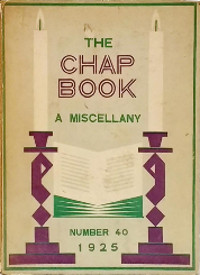
Harold Monro's The Chapbook no. 40, in which three etchings by Roberts appeared
|
|
| Through Sarah's friendship with Esther Lahr, begins to receive commissions for portraits of literary figures and for cover designs for the New Coterie magazine that Esther and her husband, Charles Lahr, run from their Progressive Bookshop in Red Lion Street, Holborn, WC1.
|
1926
| 27 April: A reading of Liam O'Flaherty's new play Darkness takes place in WR's studio, to establish the English copyright. The amateur cast includes Sarah Roberts.
|
|
| December: Publication of the de-luxe edition of Seven Pillars of Wisdom, including Roberts's portraits and tailpieces.
|
1927
| Joins the London Artists' Association.
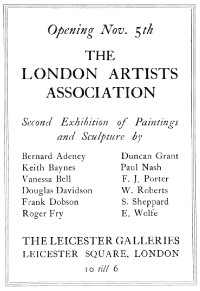
An advertisement in the November 1927 issue of the Burlington Magazine
|
|
| Prepares the jacket design for Rhys Davies's The Withered Root.
|
|
| Holidays with his family at La Ciotat, near Cassis in the south of France.
|
|
| July: Solo exhibition (sponsored by the London Artists' Association) at 163 New Bond Street.
|
|
| In August visits Germany with Rhys Davies, H. E. Bates, Charles Lahr and others.
|
1929
| Solo exhibition (sponsored by the London Artists' Association) at the Cooling Galleries, New Bond Street,
W1 – 'Paintings by William Roberts'.
|
|
| Moves to 59 Haverstock Hill, NW3.
|
Late 1920s
| Through his brother Michael, becomes part of a cosmopolitan social group including Paul de Zoysa, which he records in a number of pictures.
|
Early 1930s
| Spends some summers at T. E. Lawrence's cottage Clouds Hill, in Dorset.
'I am at Southampton, in my lodging, with a little fire against the cold of the night. At Clouds Hill Mrs. Roberts is inhabiting the cottage. She arrived unexpectedly, after a holiday at Weymouth which exhausted her money and drove Roberts himself back to London to raise more. She moved to Winfrith to await it … I suggested she move to the cottage for a few days, till the money comes' – T. E. Lawrence to his mother, 6 April 1934
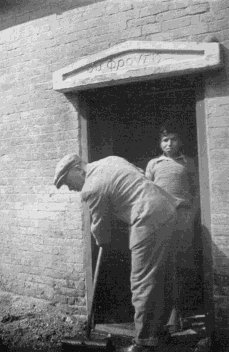
William and John Roberts at Clouds Hill in the early 1930s
|
1931
| Another solo exhibition (sponsored by the London Artists' Association) at the Cooling
Galleries – 'Recent Paintings and Drawings by William Roberts'.
|
|
| Wilfrid Evill, a solicitor and collector of modern British art, buys The Restaurant from the Cooling Galleries exhibition, going on to becoming a keen collector of Roberts's work over the next 30 years.
|
1932
| Shows work in the Venice Biennale.
|
1933?
| The Robertses spend two–three weeks in a flat in Alicante, Spain, owned by the brother of family friend Agustín de Irízar, lecturer in Spanish at Leeds University. (Later, Roberts and Sarah attended several guitar festivals in that country but, according to John David Roberts in the 1993 Gillian Jason Gallery catalogue, 'He did not like Spain.')
|
Early 1934
| The London Artists' Association is disbanded. Roberts transfers to the Lefevre Gallery, King Street, SW1.
|
1934–5
| The Chess Players 1929–30 sparks controversy when shown as part of an exhibition of a 'Loan Collection of Contemporary British Art', organised by the Empire Art Loan Collections Society at various venues in New Zealand and Australia.
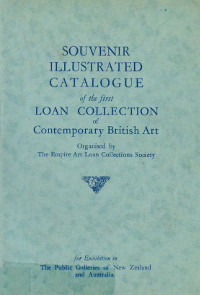
The catalogue of the 'Loan Collection of Contemporary British Art' that toured New Zealand and Australia in 1934–5
|
1935
| Moves to 6 Provost Road, NW3.
|
|
| February–March: Exhibition at the Lefevre Gallery – 'New Paintings and Drawings by William Roberts'.
|
1936
| 22 December: At Sotheby's, sells 35 letters from T. E. Lawrence, who had died in May 1935.
1938
| March: Exhibition at the Lefevre Gallery – 'Paintings and Drawings by William Roberts'.
|
1939
| Shortly after the start of the Second World War on 3 September, leaves London, staying briefly at Lonacre, Beech Tree Road, Amersham; Flint Cottage Earl Howe Road, Holmer Green, near High Wycombe; 21 St Mary's Road, Headington, Oxford; and 40 Park Town, Oxford, before moving to 76 Copse Lane, Marston, Oxford, by early June 1940, remaining there until 1946 and teaching
one day a week at the Oxford Technical School. He continues to teach at the Central School in London for a couple of days a week until spring (?) 1940.
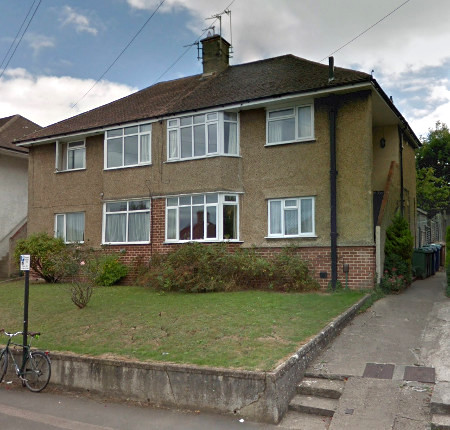
76 Copse Lane, Marston – the right-hand first-floor maisonette – in 2018. The property was built in 1935, and had two bedrooms and a sitting-room, kitchen, bathroom and garden.
|
|
| 12 September: From Flint Cottage, Holmer Green, writes to 'Shearman' (Harold Shearman, of the Workers' Educational Association?) for advice on getting 'some pictorial propaganda work to do'.
|
|
| 16 December: Commissioned by the War Artists' Advisory Committee (WAAC) to produce six portrait drawings, for 10 guineas each.
|
1940
| February: To the great annoyance of the WAAC, aborts a planned trip to France to produce one of his commissioned portraits, citing travel difficulties. The number of portraits he is to draw is reduced to four.
|
|
| May: Completes the last of his commissioned portraits.
|
|
| June: After reporting that more war-artist work has been commissioned from WR, the Liverpool Daily Post of 20 June comments that 'He has another distinction. He has made a habit of paying his income-tax the day after receiving the demand note. This has been done, not from any ostentation, but because, with an artist's detachment, he believed that this was the usual and expected course. He had supposed that a note accompanying the receipt and congratulating him on his public spirit was also the usual thing.'
|
1940–42
| Collaborates with his son on the publication of two illustrated books of verse: Fantasy for Flute and Four Fables (published as by David Roberts).
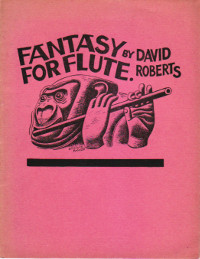
The cover of Fantasy for Flute, by [John] David Roberts
|
1941
| January: Munitions Factory, commissioned by the War Artists' Advisory Committee, is included in the British Institute for Adult Education's first exhibition of war art for smaller provincial centres, which visits 24 venues between now and August 1943 and is seen by c.112,000 people.
|
|
| August: The War Artists’ Advisory Committee rejects an offered unknown picture (probably Demolition Squad) and suggested topics of Indian troops and a prisoner-of-war camp, but commissions three pictures on transport-related subjects for £25 each.
|
|
| November: The Control Room, Civil Defence Headquarters, also commissioned by the WAAC, is included in the British Institute for Adult Education's second exhibition of war art for smaller provincial centres, which also visits 24 venues between now and August 1943 and is seen by over 7,000 people.
|
1942
| July–August: Exhibition at the Redfern Gallery, Cork Street, W1 – 'William Roberts'.
|
1945
| October–November: Watercolour exhibition at the Leicester Galleries, Leicester Square, WC2 – 'Drawings in Colour by William Roberts'.
|
1945?
| Ernest Cooper, the owner of a number of health-food shops, starts buying WR's work and becomes
his principal patron, eventually owning 20 oils and 49 other works, mainly watercolours.
|
1946
| Moves to rented rooms at 14 St Mark's Crescent, backing on to the canal near Regent's Park, NW1.
|
1948
| Begins exhibiting at the Royal Academy Summer Exhibition (subsequently shows there
every year until his death).
|
1949
| November: Exhibition at the Leicester Galleries, WC2 – 'New Drawings, Satirical and Otherwise by William Roberts'.
|
1950
| 12 February: Bernard Meninsky, Roberts's friend and colleague at the Central School, dies.
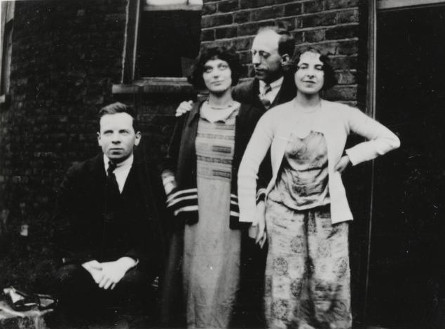
(L to R) William Roberts, Sarah Roberts, Bernard Meninsky and an unknown woman, mid-1920s
|
1951
| The London Transport Board commissions a poster – London's Fairs – advertising fairs accessible by public transport.
|
| As sole remaining sitting tenants of 14 St Mark's Crescent, the Robertses buy the house, with the help of Sarah's friend Victoria Kingsley. William, Sarah and – except for a few brief periods – John will live there for the rest of their lives.
|
1956
| Publishes The Resurrection of Vorticism and the Apotheosis of Wyndham Lewis at the Tate – the first of five 'Vortex Pamphlets' – in response to the exhibition 'Wyndham Lewis and Vorticism' at the Tate Gallery, London, which appears to present Vorticism as the creation of Lewis alone, with Roberts and other artists as mere disciples. (Subsequent Vortex Pamphlets appear later in 1956, in 1957 and in 1958.)
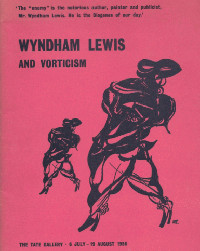
The catalogue for the Tate's exhibition 'Wyndham Lewis and Vorticism', which prompted Roberts's series of Vortex Pamphlets
|
1956
| September: Publication of Modern English Painters, vol. 2: Wyndham Lewis to Henry Moore by Sir John Rothenstein, director of the Tate Gallery. The chapter on Roberts prompts his fourth Vortex Pamphlet, A Reply to My Biographer Sir John Rothenstein (February 1957), in which he complains of errors and misrepresentations and also airs earlier grievances against the author.
|
1957
| 21 March: The Listener publishes his reminiscences of Wyndham Lewis, who had died on the 7th.
|
|
| 19 August: David Bomberg, Roberts's friend from the Slade, dies.
|
|
| Publishes Some Early Abstract and Cubist Work 1913–1920.
|
1958
| February: Exhibition at the Leicester Galleries, WC2 – 'Paintings and Drawings by William Roberts'.
|
|
| 25 April: Elected an Associate of the Royal Academy.
|
| 1959
| Publishes My 'Trooping the Colour' and the Errors of the Daily Mail in response to criticisms of his picture Trooping the Colour in that year's Royal Academy Summer Exhibition.
'Visnews filmed May 2 at London's historic Royal Academy artist William Roberts's £1,500 painting of the colourful and traditional Horse Guards ceremony Trooping the Colour – a painting that has shocked the Guards: There are 17 instances of improper dress in it.' (British Pathé)
|
1960
| Publishes Paintings 1917–1958 by William Roberts A.R.A.
|
1961
| Receives an award of £500 from the Calouste Gulbenkian Foundation 'in recognition of his artistic
achievement and his outstanding service to British painting'.
|
1964
| Publishes
William Roberts A.R.A., Paintings and Drawings 1909–1964.
|
1965
| Retrospective exhibition – 'William Roberts, A.R.A.' – organised by the Arts Council, at the Tate Gallery; WR designs the catalogue cover.
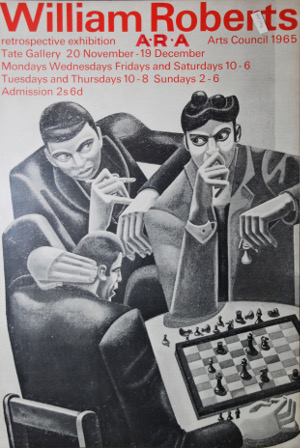
The poster for WR's 1965 Arts Council retrospective, using part of his Chess Players 1929–30
|
|
| Refuses an OBE (earlier that year the Beatles had been awarded MBEs).
|
| 1966
| January–February: The Arts Council retrospective exhibition travels to the Laing Art Gallery,
Newcastle, and the Whitworth Art Gallery, Manchester.
|
|
| 28 April: Elected a Royal Academician.
|
1967
| Exhibition at Southampton City Art Gallery – 'William Roberts'.
|
1967–8
| After election as an RA, serves the usual two-year term as a member of the Royal Academy council, thus automatically becoming part of the Summer Exhibition selection committee. In 1967 he also is part of the Summer Exhibition hanging committee.
|
1969
| Publishes 8 Cubist Designs.
|
|
| September: Exhibition at the d'Offay Couper Gallery, Dering Street, W1 – 'William Roberts, R.A., Drawings and Watercolours 1915–1968'.
|
1970
| 31 December: Elected a Senior Royal Academician.
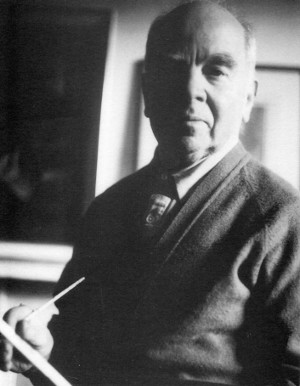
Roberts c.1970
|
Early 1970s
| Rebuffs requests for an interview or information by Richard Cork, who is carrying out research for the 1974 Arts Council exhibition 'Vorticism and Its Allies' and his 1976 book Vorticism and Abstract Art in the First Machine, despite Cork's explicit intention to 'correct [earlier] misapprehension' vis-à-vis Wyndham Lewis and the Vorticists (introduction to 1974 exhibition catalogue).
|
1971
| 14 February: An article by Barrie Sturt-Penrose in the Observer magazine – 'The Grand Recluses of Art' – describes the Robertses' spartan lifestyle and claims that 'Roberts turned his back on the art world more than 25 years ago, and has become a virtual recluse.' Roberts responds with a leaflet, Fame or Defame: A Reply to Barrie Sturt-Penrose, complaining of falsified quotations and asking 'What kind of art critic is this, who sets out to criticise my pictures, but criticises my gas stove and kitchen table instead?' But Sturt-Penrose's image of Roberts as eccentric and unsociable endures thereafter.
|
|
| February–March: Retrospective exhibition at the Hamet Gallery, Cork Street, W1, part of which is then shown at
the Royal Albert Memorial Museum, Exeter – 'William Roberts, R.A.: A Retrospective Exhibition'.
|
|
| July: Exhibition at Gallery 27, Northampton – 'William Roberts R.A.' (18 works on paper from the Hamet Gallery show above).
|
1972
| January: Exhibition at the Tib Lane Galleries, Manchester – 'Water-Colours by William Roberts'.
|
|
| April–June: Exhibition at Worthing Museum and Art Gallery – 'Paintings and Drawings by William Roberts' (from the collection of Ernest Cooper).
|
1973
| April: Retrospective exhibition at the Hamet Gallery – 'William Roberts, R.A.'.
|
1974
| February–April: Shortly before the opening of the exhibition 'Vorticism and Its Allies', curated by Richard Cork at the Hayward Gallery, Roberts publishes a pamphlet, In Defence of English Cubists. Though his affectionate group portrait The Vorticists at the Restaurant de la Tour Eiffel, Spring 1915 of 1961–2 might be seen as a softening of the line he took in his 'Vortex Pamphlets' of 1956–8, in this new pamphlet he rejects the idea of there being an identifiable 'movement' called 'Vorticism', preferring to describe his fellow artists as 'Independent English Cubists'. Cork responds in an article, 'A Blast from the Past', in the Evening Standard of 28 March. He explains the contradictions of Roberts's position, mentions Roberts's rejection of his many requests for an interview, and emphasises that 'all the Vorticists contributed to the movement in a robust and individual way'. Concluding that 'Roberts's contribution is very impressive', he wishes that Roberts had gone to see the exhibition before 'damning my efforts so completely'. It is not known if Roberts did visit the exhibition; however, he is certainly familiar with the exhibition catalogue when in April he publishes a postscript to his pamphlet. He again 'reject[s] this ambiguous term Vorticism' and suggests that the organisers' aim to 'correct the "Imbalance" of the 1956 Tate exhibition' might best be achieved 'by ceasing to give Vorticist Group shows'.
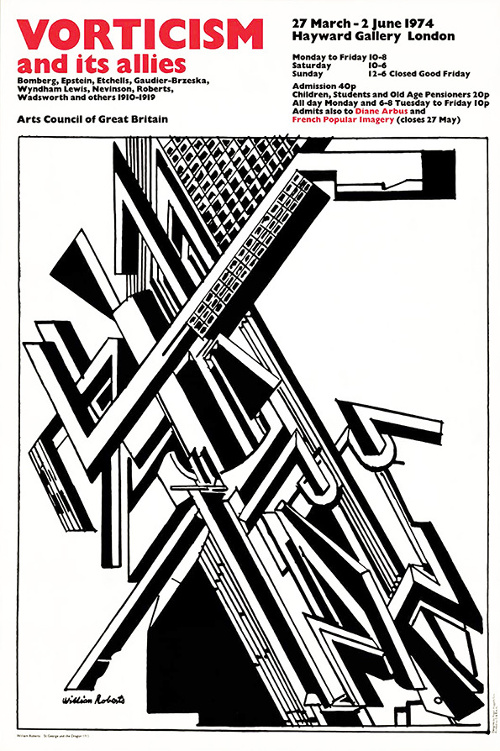
The poster of the Hayward Gallery's 1974 exhibition 'Vorticism and Its Allies', featuring Roberts's St George and the Dragon 1915
|
|
| Publishes Memories of the War to End War 1914–18.
|
1976
| Publishes Paintings and Drawings by William Roberts R.A.
| With Sarah, visits Etretat on the Normandy coast.
|
| Retrospective exhibition at the Parkin Gallery, Motcomb Street, SW1 – 'William Roberts R.A.'.
|
1977
| Writes Early Years (published posthumously, in 1982).
|
1979
| 1 February: The exhibitions secretary of the Royal Academy writes to Roberts proposing a retrospective exhibition at the RA. Roberts declines the suggestion with thanks, saying that he does not wish to 'repeat [the] effort' of the 1965 Arts Council retrospective.
|
|
| The Tate Gallery buys The Gutter from Ernest Cooper.
|
1980
| 20 January: Dies – having worked up to the last day of his life.
|
|
| In the years following Roberts's death, Sarah and John Roberts arrange exhibitions of his work still in the family's possession in commercial and public galleries and try to acquire other examples with a view to 14 St Mark's Crescent eventually becoming a Roberts house-museum.
|
|
| September–October: Retrospective exhibition at the Maclean Gallery, St George Street, W1 – 'William Roberts, R.A., 1895–1980'.
|
|
| November–December: Exhibition at the Anthony d'Offay Gallery, Dering Street, W1 – 'William Roberts 1895–1980: Drawings and Watercolours'.
|
1981
| The Tate Gallery buys Trooping the Colour from Ernest Cooper.
|
1982
| Publication of Roberts's Early Years.
|
| Exhibition at Salander-O'Reilly Galleries, New York.
|
1983
| March–April: Retrospective exhibition at Reading Museum and Art Gallery – 'William Roberts R.A.: An Exhibition of Paintings and Drawings by William Roberts
R.A. 1895–1980'.
|
1984
| July–October: Exhibition at the National Portrait Gallery, London – 'William Roberts 1895–1980: An Artist and his Family'.
|
1985
| July–September: Exhibition at the Fitzwilliam Museum, Cambridge – 'William Roberts R.A.: Watercolours, Drawings and Etchings'.
|
1986
| March–April: Exhibition at the Gillian Jason Gallery, Inverness Street, NW1 – 'William Roberts 1895–1980: Double-Sided Drawings'.
|
1989
| April: Exhibition at the Albemarle Gallery, Albemarle Street, W1 – 'William Roberts R.A.: Paintings, Drawings and Watercolours 1910–1978'.
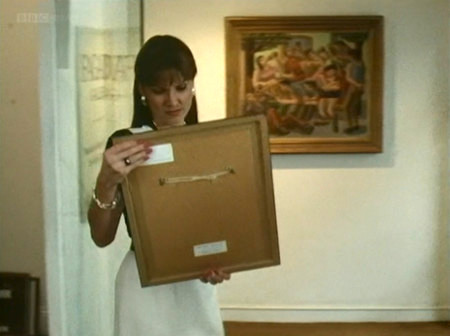
Scenes in the BBC mini-series Mother Love were filmed in the Albemarle Gallery (renamed 'Fagans' for the occasion) during the 1989 William Roberts exhibition there. Here actress Liliana Komorowska stands in front of Roberts's La Dive Bouteille 1973.
|
1990
| March–April: Exhibition at the Gillian Jason Gallery – 'William Roberts: An Artist's View'. |
|
| John Roberts publishes Five Posthumous Essays and other Writings by William Roberts.
|
1991
| January–February: Exhibition at the Gillian Jason Gallery – 'William Roberts 1895–1980: 40 Self Portraits'.
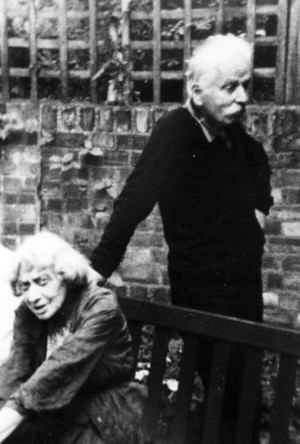
Sarah and John Roberts in the garden of 14 St Mark's Crescent, 1991
|
1992
| April–May: Exhibition at the Gillian Jason Gallery – 'William Roberts 1895–1980: Humour and Satire'.
|
|
| 29 November: Sarah Roberts dies at 14 St Mark's Crescent.
|
1993
| September–October: Exhibition at the Gillian Jason Gallery – 'William Roberts 1895–1980: Pictures Pure and Pagan'.
|
1995
| Mid-February: John Roberts dies at 14 St Mark's Crescent. The art works in the house are taken in by the Tate Gallery for safekeeping, and as John has left no will the Treasury Solicitor thereafter administers his estate.
|
1998
| 6 May: Death of Ernest Cooper.
|
|
| September: The William Roberts Society is formed to further the appreciation of Roberts's work. Eventually becoming a charitable trust, it organises lectures and outings, campaigns (unsuccessfully) for 14 St Mark's Crescent to become a Roberts house-museum and (with success) for an English Heritage blue plaque to be erected to mark Roberts's time there, is licensed by the Treasury Solicitor to administer copyright in Roberts's works, produces newsletters and a website about Roberts, and publishes short books on Sarah Roberts and on Roberts's work in the 1950s, as well as lobbying for the works by Roberts in John Roberts's estate to be kept together and donated to the nation.
|
2003
| 24 October: An English Heritage blue plaque commemorating Roberts's time at 14 St Mark's Crescent is unveiled there by the playwright Alan Bennett.
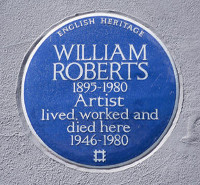
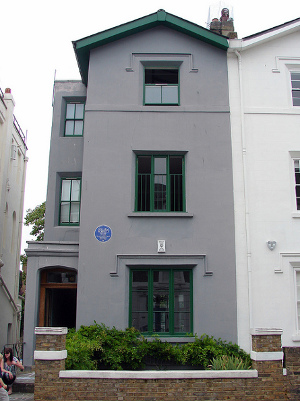
14 St Mark's Crescent – Roberts's studio was the room to the right of the front door. The blue plaque commemorating his living there was unveiled in 2003. The colour scheme is as towards the end of the Robertses' time; the burglar alarm and the planting are not.
|
2004
| March–May: A major Roberts retrospective at the Hatton Gallery, Newcastle upon Tyne – 'William Roberts (1895–1980)', with 67 exhibits, also shown June–September at Graves Art Gallery, Sheffield, with slightly fewer works. The catalogue, by the exhibition's curator, Andrew Heard, includes a detailed biography of Roberts.
|
|
| October: Publication of William Roberts: An English Cubist, by Andrew Gibbon William (London: Lund Humphries) – the first monograph on the artist.
|
2007
| January– March: Exhibition at Pallant House Gallery, Chichester – 'William Roberts: England at Play'.
|
|
| December: The Museums, Libraries and Archives Council announces that 117 works by WR from the estate of John Roberts are allocated to the Tate collection in lieu of inheritance tax on the estate of Sarah Roberts. The other works in John's estate – some 430 in total, still being stored by Tate – are also to be given to the Tate collection if no valid claim to them is made in the 25 years after John's death.
|
2011
| 15–16 June: Works by Roberts in the Sotheby's sale of the collection of Wilfrid Evill and his ward Honor Frost fetch record auction prices for the artist.
|
2012
| 10 May: At Sotheby's, The Chess Players 1929–30 sells for £1,161,250 – the only work by Roberts to make more than £1 million at auction.
|
2012–13
| May 2012–March 2013: Exhibition at Tate Britain – 'Focus: William Roberts', about 40 works from the Tate collection, with an emphasis on drawings acquired from the estate of John Roberts.
|
2015
| April: The William Roberts Society decides to dissolve itself.
| | | | | |
